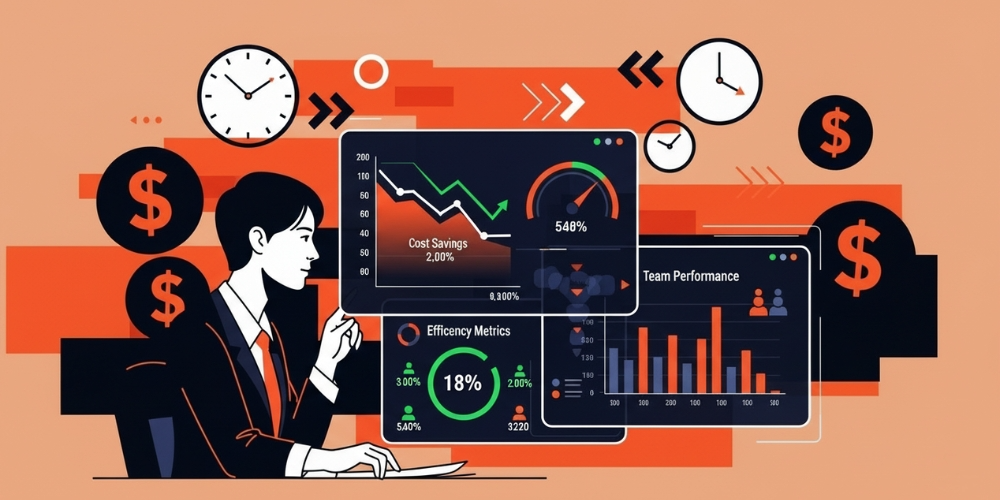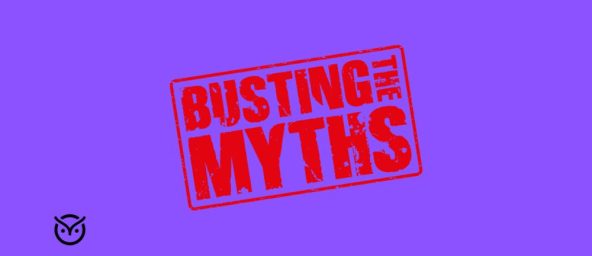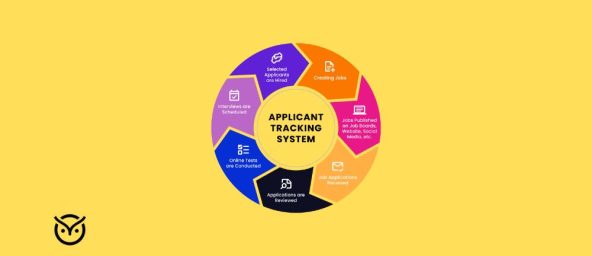
TL;DR
- Keyword filters block many strong resumes.
- Data-driven hiring uses metrics, analytics, and models for smarter picks.
- Employers with data analytics in recruitment hire faster and better.
- Candidates gain when data-driven hiring decisions cut bias and reward skills.
- Data-driven hiring strategies need tools and recruitment data analysis.
Picture this: your HR team receives hundreds of resumes. Most get tossed out before anyone reads them because they don’t include the right keywords. That means you might miss someone who’s great but doesn’t know ATS systems or job-posting jargon. That’s the problem with depending on keyword filtering.
Now consider a different path. Data-driven hiring uses hard facts from past hires, recruitment data analysis, source-to-hire analytics, assessments, predictive models, and candidate data to choose who moves forward. What if your next great hire is waiting beyond the filters you didn’t set right? In this blog, you will learn how using a data-driven hiring process and data-driven talent acquisition can give you far better candidates than keyword games ever will.
Why Keyword Filtering No Longer Works

Keyword filtering was a simple shortcut: match words in the job description to resumes. But it fails now because:
- Many resumes are rejected by ATS (Applicant Tracking Systems) before a human ever sees them. Over 75 percent of resumes are never read due to formatting issues or missing keywords.
- When candidates stuff resumes with keywords, you get lots of “noise”. These are the people who look like a match on paper but aren’t in practice.
- It encourages game-playing rather than genuine fit: people tailor resumes for the system rather than to highlight what they truly bring.
- Keywords can’t measure things like ability to learn, soft skills, or how someone will adapt.
Because of all this, keyword-based hiring ends up being inefficient. It slows time to hire, increases cost per hire, and risks poor quality of hire.
Interactive Resume Puzzle: Which resume would you hire?
What Is Data-Driven Hiring?

Data-driven hiring involves using real numbers, analytics, and evidence rather than relying on intuition or simply matching job descriptions. It brings together various types of data, including sourcing, performance, interview feedback, assessments, drop-off rates, cost per hire, and time to hire.
Key elements include:
- Recruitment analytics: tracking how many apply, through which channel, and how many make it through each stage.
- Predictive modeling: using historical data to predict what kinds of candidate profiles succeed. For instance, some organizations using predictive hiring report 24 percent better quality of hire and 70 percent faster time-to-fill compared to traditional methods.
- Objective assessments: using structured interviews, skills tests, and standardized scoring rather than unstructured interview impressions.
It overlaps with data-driven recruitment, data-driven talent acquisition, data-driven recruiting, etc. It may also use HR automation software and recruitment automation software to help collect and analyze data faster.
Buzzword vs. Reality: What Is Data-Driven Hiring?
Tap or press Enter on a card to flip. Learn how each metric works in a data-driven hiring approach.
How Data-Driven Hiring Guarantees Great Candidates

Here’s how shifting to data-driven hiring really pushes you toward better hires:
Better candidate matching
Instead of just matching keywords, you compare candidate data to high-performing employee profiles. This cuts down false positives (resumes that look good but don’t deliver).
Faster and more efficient hiring
Using source-to-hire analytics, you see which channels bring the best candidates (referrals, job boards, social, etc.). You focus there. That reduces time to fill and cost per hire.
Reduced bias, fairer processes
Data helps reveal where bias enters (for example, in interview scoring, drop-off rates by gender or background). With data, you can correct for those bias patterns.
Continuous improvement
With recruitment data analysis, every hire becomes feedback. You track what worked, what didn’t. You can refine job descriptions, interview questions, and assessment tools.
Higher quality of hire & retention
Predictive models help pick candidates who are more likely to perform well and stay longer. That reduces turnover and protects culture.
Better budget planning
With data-driven financial modeling for hiring budgets, you can forecast cost-per-hire, see where investments give returns (e.g., in technology, tools, sourcing).
Mini Quiz: How Data-Driven Hiring Guarantees Great Candidates
Select all outcomes that come from a data-driven hiring approach, then submit.
Benefits for Recruiters and Employers

For recruiters and employers, data-driven hiring strategies are not just about saving time. They shift recruitment from guesswork to proven outcomes. Here are the main benefits:
- Efficiency: With tools that automate screening and provide candidate data in real time, recruiters can cut hours spent on manual resume checks.
- Cost savings: Using data-driven financial modeling for hiring budgets, employers can forecast costs more precisely and reduce wasted spend on ineffective job boards or ads.
- Better team fit: Analytics reveal not only skill gaps but also cultural fit, helping avoid mismatched hires that often leave within the first year.
- Stronger pipelines: Recruit-driven insights highlight which sourcing channels deliver long-term performers, helping build a sustainable talent pipeline.
- Evidence for stakeholders: With recruitment data analysis, HR can finally prove ROI to leadership by showing measurable outcomes like performance, retention, and diversity.
ROI Calculator: Benefits for Recruiters and Employers
Enter your numbers to see estimated savings with a 30% faster time-to-fill using data analytics in recruitment.
Estimated ROI Impact
What This Means for Candidates

Candidates also gain when companies switch to a data-driven hiring process. Instead of being punished for missing a buzzword, applicants are assessed on skills, potential, and real achievements.
- Fairer evaluation: Data tools minimize the bias of gut-feel decision-making. For example, algorithms can flag when certain groups are disproportionately screened out, forcing review.
- Recognition of soft skills: Data models can connect assessments, project histories, and references to show who adapts quickly or collaborates well.
- Transparency: With data analytics in recruitment, candidates often see clearer job descriptions, structured interviews, and fairer feedback loops.
- Career growth: Over time, data-driven recruiting encourages companies to value continuous learning and adaptability, rewarding those who build versatile skill sets.
Best Practices for Moving to Data-Driven Hiring

Shifting to a data-driven talent acquisition model requires planning. Here are the best practices:
Start small with measurable KPIs
Focus first on simple metrics such as cost-per-hire or time-to-hire before adding predictive analytics.
Invest in the right tools
Use HR automation software or recruitment automation software to capture data across the funnel. Ensure tools integrate with your existing HRIS.
Educate hiring managers
Teach managers to interpret data. For instance, explain how source-to-hire analytics reveals which job boards bring top performers.
Balance data with human insight
Data is powerful, but context matters. Use analytics to guide, not replace, human judgment.
Maintain compliance and ethics
Keep data use transparent and compliant with labor regulations. Make sure data-driven recruitment (deliberate typo variation included as you requested for internal linking) does not create new forms of bias.
Continuous learning
Treat every hiring cycle as feedback. Build dashboards, run A/B tests, and refine models as new recruitment data analysis comes in.
By following these steps, companies can shift smoothly toward a process that is scientific, fai,r and sustainable.
Best Practices: Move to Data-Driven Hiring
Click a step to view actions. Check items as done to update progress.
Conclusion
Keyword filtering belongs to yesterday. Today, hiring teams can’t afford to miss strong candidates simply because their resumes lack a phrase. With data-driven hiring, recruiters and employers use analytics to identify who will perform, fit, and stay. Candidates, in turn, get judged more fairly and transparently. The future of recruitment is not about gaming the system but about building systems that actually work.
FAQs
Keyword hiring looks for words in resumes. Data-driven hiring uses analytics like performance metrics, assessments, and sourcing data to evaluate fit. It’s about evidence, not word counts.
Yes, when used correctly. Data highlights where bias exists and helps create fairer processes. But it must be paired with ethical safeguards to avoid embedding bias in algorithms.
Yes, but not obsessively. Keywords help resumes get noticed by systems. However, data-driven hiring decisions weigh more than keywords as they consider skills, results, and potential.




